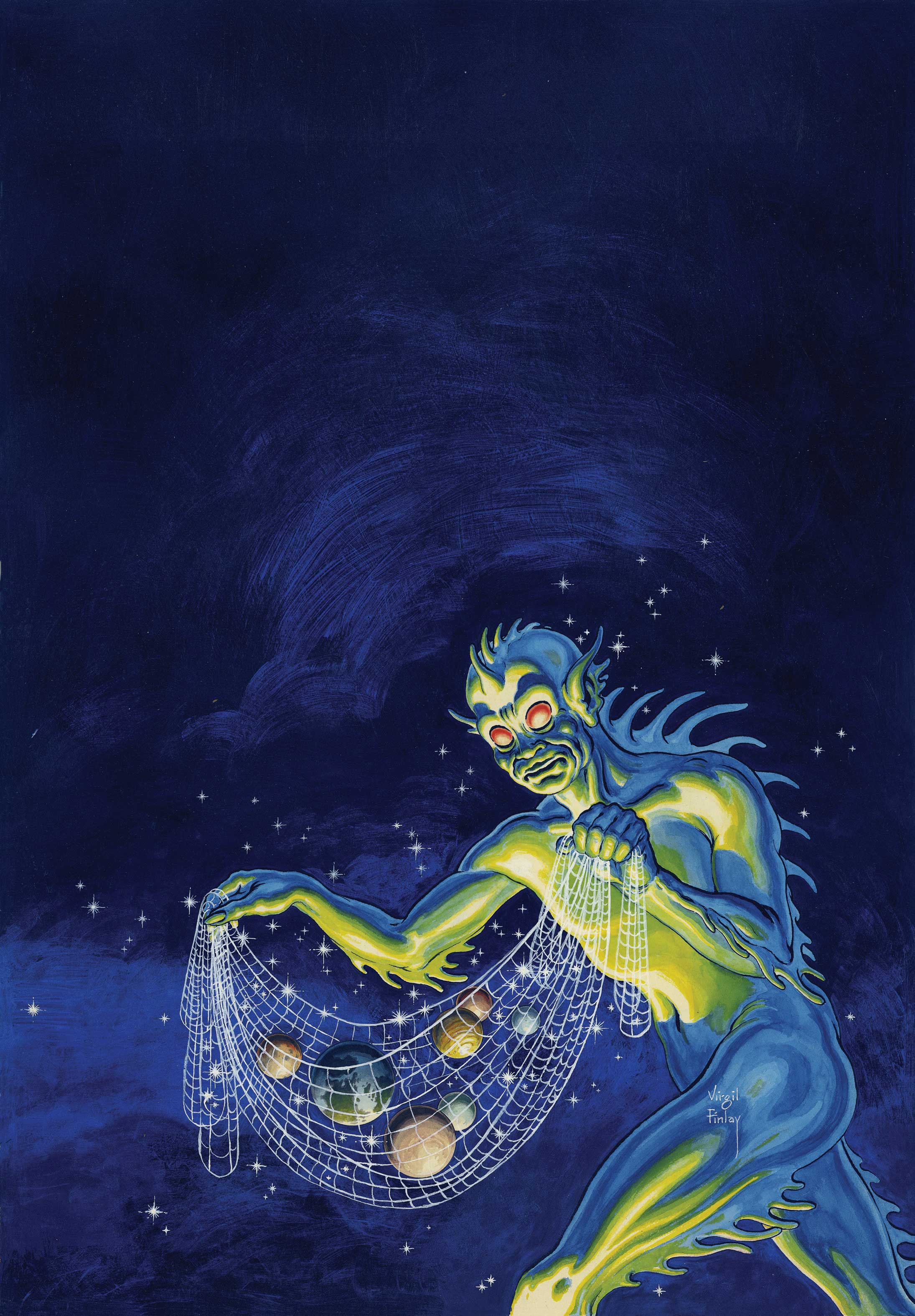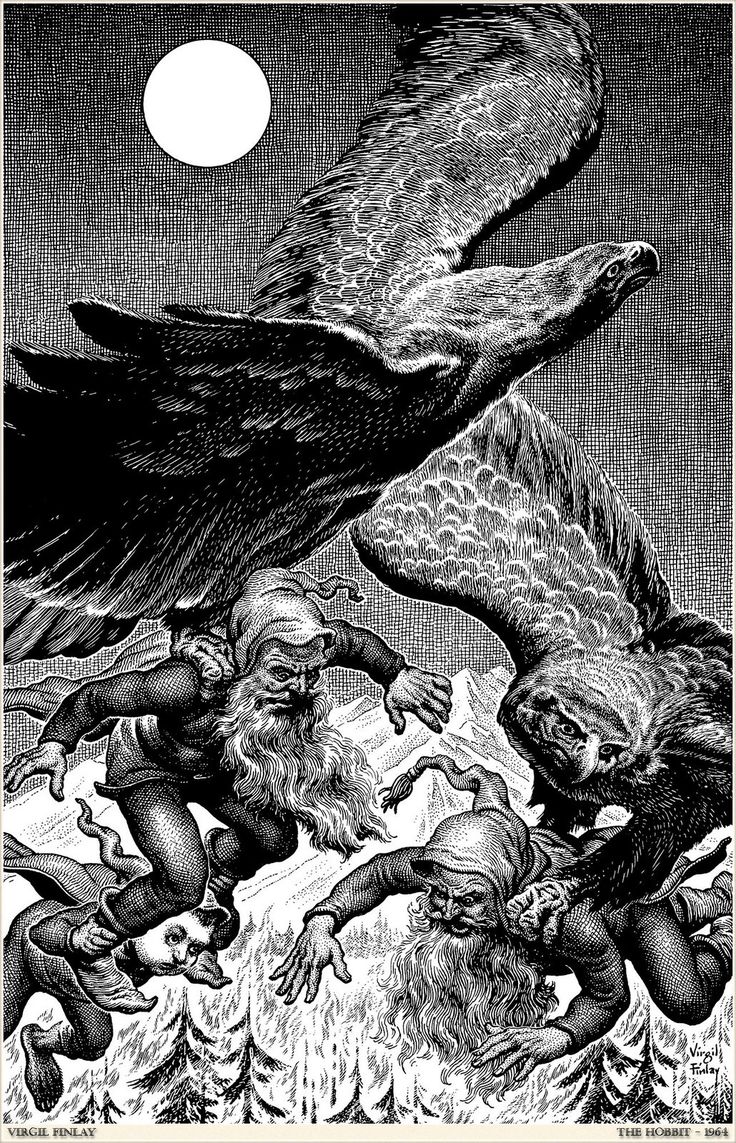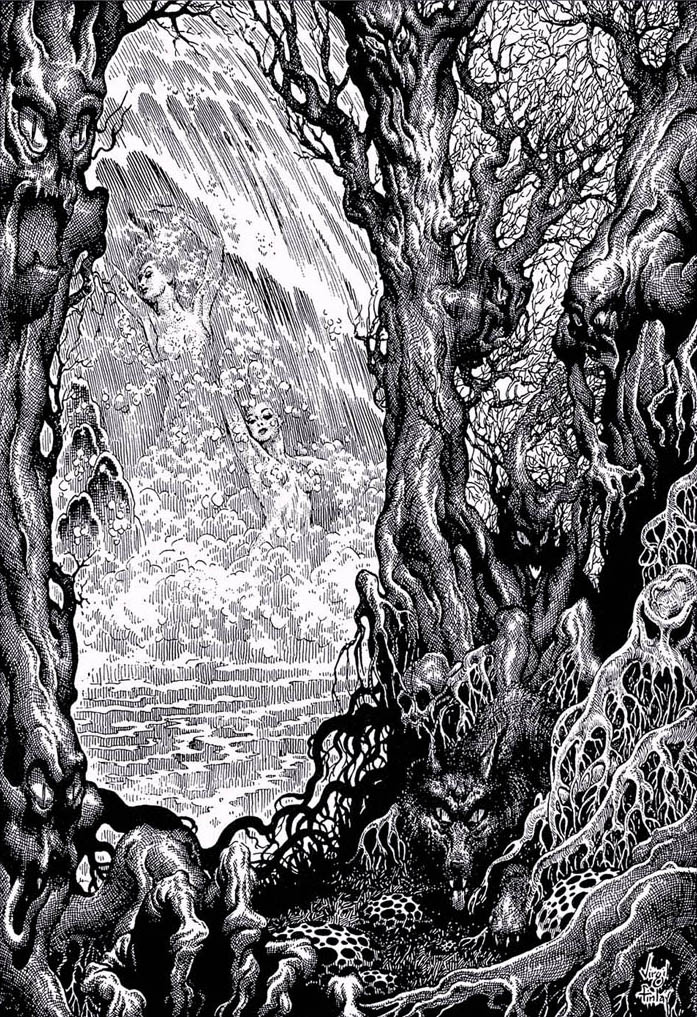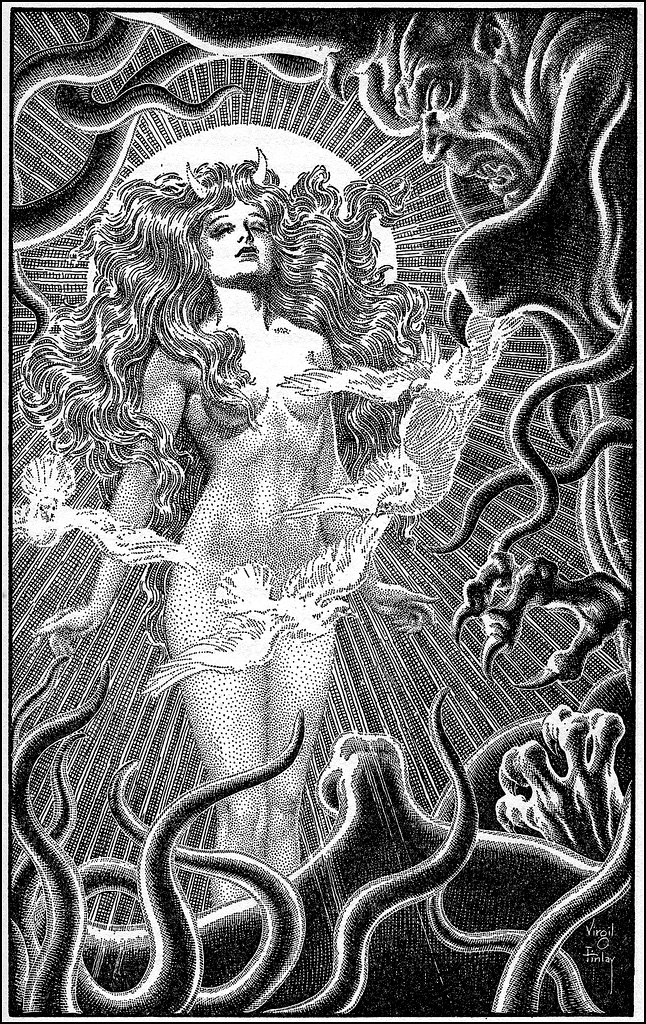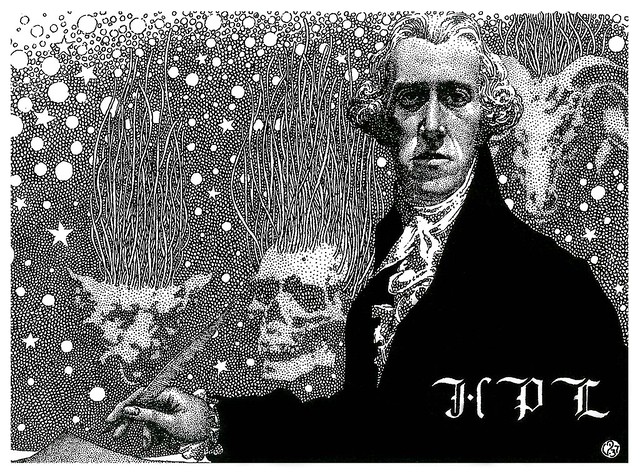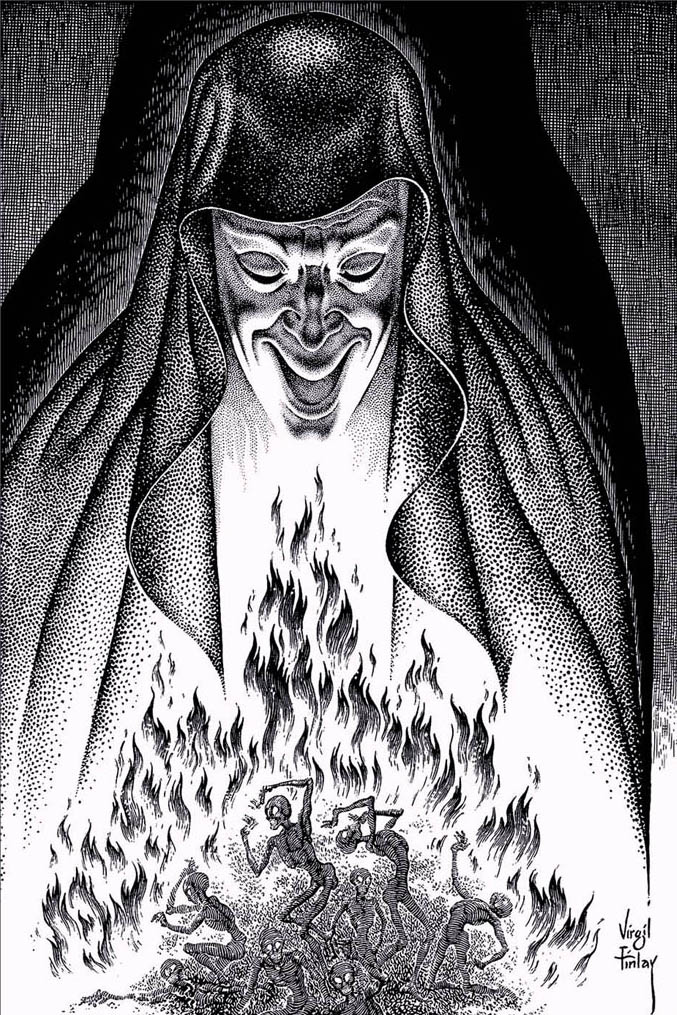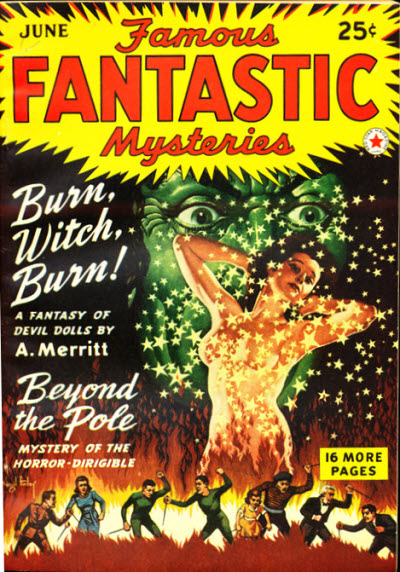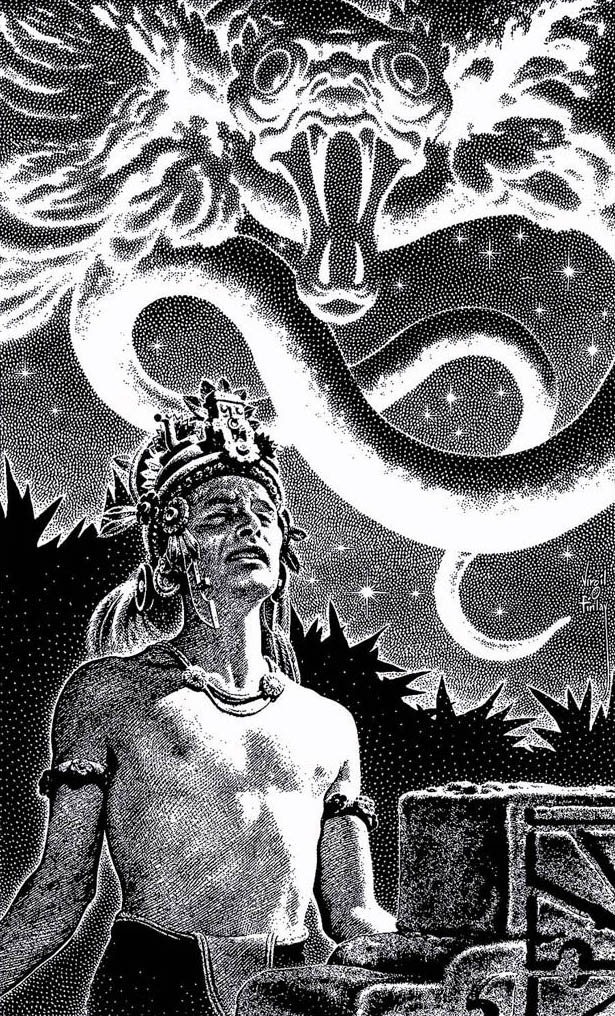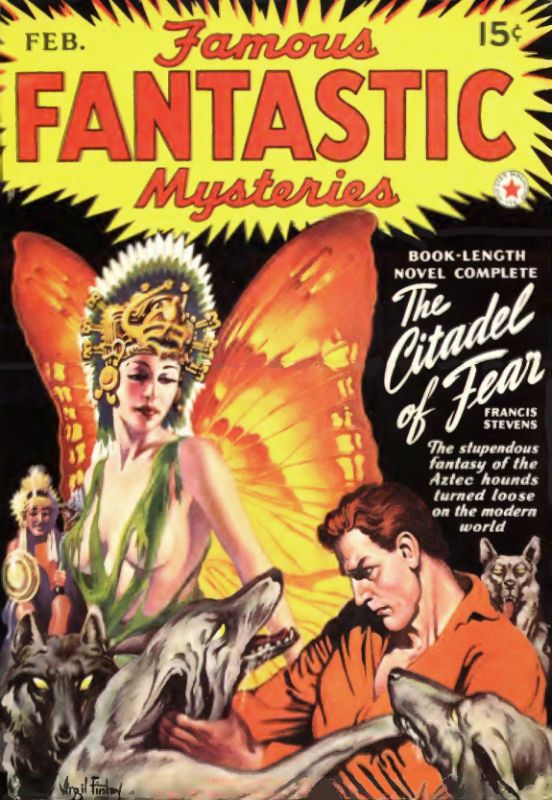Virgil Finlay: Pulp Art Legend
Pulp artist extraordinaire, Virgil Finlay, would have turned one hundred and five today. He was, arguably, the greatest artist to work in the field of SFF/weird pulps, creating classic artwork for tales by H.P. Lovecraft, Robert E. Howard, A. Merritt and many, many other legendary authors.
I’ve been extremely short on time today, but I wanted to get something up for Mr. Finlay’s birthday. So, I’m going to turn the rest of this blog entry over to Gerry de la Ree. Gerry was a legend in SFF fandom. He befriended Virgil during the later, difficult years of the artist’s life. In 1975, he published the classic art collection, The Book of Virgil Finlay. The text below is an excerpt from an extensive article that Gerry wrote for Starlog:
The mighty Virgil Finlay.
When Virgil Finlay died at age 56 on January 18, 1971, he left behind him thirty-five years of fantasy and science-fiction artwork — and a reputation as the most meticulous pulp magazine illustrator of his generation.
Most of the readers of Starlog were not around in 1935 when Finlay sold his first professional drawings to Weird Tales magazine. Within only a year he had established himself as being the finest black-and-white illustrator in his chosen field. His use of the stipple and cross-hatch techniques, and an ability to enhance stories with his unique drawings quickly rocketed him to the top. Over the years many artists would attempt to duplicate Finlay's techniques, but none ever attained the quality that was the trademark of Finlay's finest efforts.
Even Frank Kelly Freas, ten-time winner of the "Hugo" as science-fiction's top illustrator, admitted in a recently published book of his artwork that his one experiment with Finlay's stipple technique — that of using small, individually placed dots of ink to create delicate shading — earned him a new respect for Virgil's drawings. "It became very clear to me that I would never give Finlay any competition. Foosh!— what a lot of work all those blasted little dots were!”
As Finlay himself explained his work, black-and-white drawings were done in a variety of techniques, employing pen, brush, spatter, lithographic pencils, sponges, and knives on a variety of paper; the majority were done on scratchboard. His color work was generally done in oil color thinned with quick drying siccative, and sometimes combinations of ink, watercolor, gouache, and oil.
The stipple technique, which he refined throughout his career, he explained this way: "Using a 290 lithographic pen (which has an extremely fine point), I dip the pen in India ink and allow only the liquid to touch the drawing surface, which is normally scratchboard. The point is then wiped clean and re-dipped for the next dot." Obviously, this was a time-consuming operation. Today many artists obtain a similar effect with the use of stipple-surface paper. But study under a magnifying glass will quickly determine one method from the other.
Even in the final year of his life, when pain often limited his time at the drawing board, Finlay claimed he was able to make use of the stipple without the aid of a magnifying glass. During most of his career, his magazine drawings were done to the exact size they were to be published at. Attempts by some publishers to enlarge these small drawings have resulted in ghastly distortions of his work.
Finlay's excellent knowledge of anatomy resulted in human and animal figures that seemed to literally leap off the page. He combined alien creatures, weird settings, and a vivid imagination with an ability to accurately illustrate scenes from almost any story. His color work was not always as successful as his black and white drawings, but he still created many outstanding magazine covers. If you own a Finlay cover original you have a collector's item— there just are not that many in existence.
But many of the artist's most detailed drawings were all but ruined by the cheap pulp paper used by the fiction magazines of the 1930s and 1940s. And the rates paid by the magazines were distressingly low.
During the last decade of his life, Finlay moved to higher paying markets, such as Doubleday and various astrology magazines, contributing some sixty drawings to the former and almost 200 interiors and covers to the latter. During this period he continued to work for most of the few science-fiction magazines still appearing, but made use of a simple line style of drawing that was far less time-consuming than the techniques employed during the peak years of his fantasy career. He saved the fine pen and ink work for the better paying publishers.
Over the years, Finlay illustrated stories by most of the top writers in the field, including H. P. Lovecraft, Clark Ashton Smith, Robert Bloch, Edmond Hamilton, Henry Kuttner, C. L. Moore, Seabury Quinn, Jack Williamson, Carl Jacobi, Robert E. Howard, August Derleth, A. Merritt, George Allan England, John Taine, H. Rider Haggard, H. G. Wells, Talbot Mundy, Arthur Conan Doyle, Murray Leinster, Edgar Rice Burroughs, John Collier, E.F. Benson, Manly Wade Wellman, Stanley G. Weinbaum, James Blish, Frank Belknap Long, L. Ron Hubbard, Jack Vance, Leigh Brackett, Ray Cummings, Ray Bradbury, John D. MacDonald, E.E. Smith, Ben Bova, Arthur C. Clarke, Otis Adelbert Kline, Theodore Sturgeon, L. Sprague de Camp, Fletcher Pratt, Edgar Allan Poe, and even a chap named William Shakespeare. The list is almost endless.
During his career Finlay appeared in virtually every major science-fiction or fantasy magazine published. For Weird Tales he did some 220 interiors and 20 covers. For Famous Fantastic Mysteries he turned out more than 200 black and white drawings and 27 covers. Other major markets in the 1940-60 period were Thrilling Wonder Stories, Amazing Stories, Fantastic Adventures, Startling Stories, Fantastic Novels, Fantastic Story Quarterly, Galaxy, If, Fantastic, and Fantastic Universe.
By all means, check out the gallery of classic Finlay art below.




